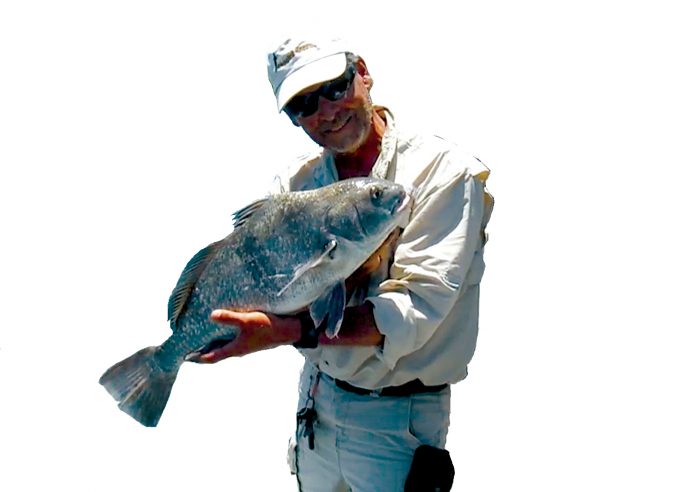Average anglers will usually try to find some available time in their busy schedule to grab a fishing rod and some everyday bait, such as frozen shrimp or mullet, and head out to the water to fish. When approached by a curious party and asked what species they are targeting, these anglers usually reply, “Whatever bites.”
I have run into quite a few anglers just like this, and in most cases, they spend their fishing adventure catching sailor’s choice, some other oddball species, and occasionally finding a couple of really good fish.
I have been asked by many anglers for help over the years, and the first thing I always suggest is targeting a specific species of fish. This will increase your chances of having a successful fishing trip the next time you head out for an adventure.
Depending on the location you are fishing and the type of water, whether from a pier or off a beach or in the marsh, there are a certain number of game fish that you can specifically target.
Spotted seatrout, red drum, flounder, sheepshead and black drum are amongst the most common inshore game fish targeted, but there are also some smaller species, like whiting, spot and croaker that are targeted for a family fish fry.
To target these species, you will need to do some studying and investigation, and you will find that learning their traits will greatly increase your success rate.
For instance, if you would like to specifically target spotted seatrout, you would want to know the type of habitat where they like to gather for purposes of feeding, mating and moving in and out of tides, so you can correctly identify the locations in which you might find them.
You would also investigate and study their diet. Spotted seatrout like shrimp, finger mullet, mud minnows, croaker and pin fish; and knowing this, allows you the option to target them with any one of these live baits. The next recommendation is to study and learn fishing techniques with these baits, rod-and-reel combinations, rigging and tackle needed.
As one will discover when investigating spotted seatrout, they are a game fish that can be caught by using artificial lures, stepping up the game for even more fishing fun.
It is also important to know that each species of fish has a different feeding habit.
They prefer different tides, different locations and different types of structure. Some are aggressive, fast-moving fish, while others are slow, sluggish and investigative. A flounder, for instance, loves to lay on the ocean floor and wait, ambushing its prey as they pass above it. Red drum are scavengers, like a catfish, and can smell old, stinky bait from great distances, even in the dark, but are also fast-water, aggressive predators, hunting and chasing down live prey at the bottom, mid-water and top water.
Sheepshead is a game fish that loves structure. They intensively search poles, pilings and rocks for crustaceans to feed on, but they also love to roam flats, searching the bottom for shellfish and swimming into marsh grasses in the shallows feeding on snails, mussels, clams and fiddler crabs.
When you are out fishing, these game fish become your prey, and the best way to become successful in catching your prey is to know as much as you can about them. Using today’s modern technology with the Web, a Google search or YouTube search can become a wealth of information.
Just remember you will find many opinions from an abundant number of sources during these types of searches, and not all will be correct. However, there are other reliable sources that can aid you in your hunt for knowledge. Your local libraries still carry a lot of literature, including magazines on this subject.
Your local Department of Natural Resources will also have plenty of helpful information. I recommend the DNR to be one of your first stops in your hunt because they will provide crucial need-to-know fishing regulations for each one of these fish species, such as size limits, catch limits, etc.
So, when you’re sitting at home this February and daydreaming about what you will catch the next time you’re on the water, think specifics. Aim your sights high, pick a target and investigate. You’ll most likely find yourself quite successful in catching and landing that species you were hunting. Until next time, good luck out there and have fun fishing!



